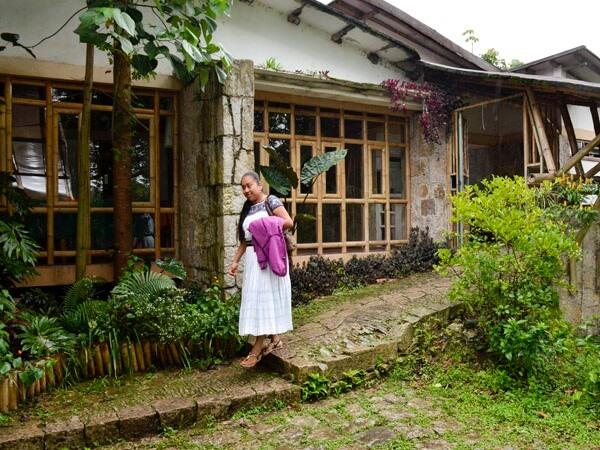
[Translation] The community organization Unión de Cooperativas Tosepan Titataniske represents one of the largest and most successful collaborative experiences in the state of Puebla and is one of the most viable proposals as an alternative to agroindustrial models in Mexico, said Dr. Aleida Azamar Alonso, a researcher at the Universidad Autónoma Metropolitana (UAM).
Participating in the conference Strategies and practices to strengthen food security and sovereignty in Latin America: experiences from Argentina, Mexico and Colombia, she explained that such organization generates the local strengthening of marginalized and forgotten collectivities by the current development pattern and gives rise to functional, scalable and sustainable solidarity proposals in the long term.
For the academic from the Xochimilco Unit, in Mexico there are alternatives for indigenous localities that due to market demands must choose to ensure access to basic foods and strengthen family production prototypes focused on self-sufficiency rather than seeking the means for commercialization, which generates a cycle of impoverishment.
Such is the case of the Union of Tosepan Cooperatives, which works in the northeastern zone of Puebla, whose headquarters are located in Cuetzalan and is made up of 26 municipalities organized into eight regional cooperatives and 410 local cooperatives, grouping 395 indigenous communities in the region. It is made up of 26 municipalities organized into eight regional cooperatives and 410 local cooperatives, which include 395 indigenous communities in the region.
"Tosepan has created a form of production based on domestic cooperation and strengthens collective processes as an option to agro-industrial models and extractive processes," Azamar Alonso pointed out in the talk An alternative for Mexican food sovereignty.
The municipal organization generates benefits for the populations and strengthens productive chains based on traditional standards, in addition to the fact that its autonomous structure maintains and enriches the collective modes of use.
Among other things, they produce coffee, honey, jams, fat pepper, cosmetics, wine, corn, handicrafts and other traditional products; they also have an ecotourism services cooperative, rescue traditional medicine and have a community radio station, which has created a collaborative structure that defends their territory, in addition to being a viable long-term strategy.
Tosepan represents one of the more than two thousand positive experiences of community organization in Mexico, in the face of the development model applied in the world that leads to economic and environmental disaster, said the academic from the Department of Economic Production.
Currently "we are witnessing brutal environmental changes resulting from human activities, mainly industrial, which have also caused the displacement of rural communities, the destruction of local production chains, the degradation of nature and food insecurity," she said.
"Faced with this situation there are no easy solutions, but at different scales in each country. Eighty percent of the nitrogen present in our bodies comes from natural gas via fertilizers, although more than 200 years ago this element came from sunlight, now we are composed of fossil hydrocarbons and our waste has microplastics that contaminate the photosynthesis process."
In Latin America, close to 300 million people lack access to or suffer from water shortages, which will worsen in the next 30 years due to the insufficiency of natural resources, making it imperative to find alternatives that meet the living requirements of 80 percent of the world's population.
Although it is said that global overpopulation causes the crisis, in reality "that is a myth", because the world throws away one billion tons of food a year, which would be enough to provide for all the inhabitants of the planet.
Dr. Patricio Vértiz, professor at the National University of La Plata, Argentina, pointed out that although his country produces enough food for its inhabitants, 37 percent of the people live in poverty and eight percent in extreme poverty, so they cannot meet their basic nutritional needs.
This matrix was outlined in the nineties of the last century and has deepened in recent decades, so he considered it appropriate to discuss the development model that has been applied in that nation, because food sovereignty means allowing the people to decide how to grow crops according to their requirements as a first priority; "the people must determine how and what is grown," he said.
The peasantry in the case of that nation is not as important as in the rest of Latin America, so food sovereignty is not as deeply rooted as in other nations of the continent and "what is grown in Argentina is focused on the world market," explained the researcher.
The economic agents of the export sector control the production, distribution and also the price of agricultural goods, while food sovereignty requires access to land and a state policy that favors the internal consumption of communities.
Geologist César Jerez Martínez, activist of Frutos de Paz and Baluarte Nacional Campesina, detailed that Colombia generates and consumes 80 million tons of provisions, but 17 million agricultural products have to be imported.
"In recent years, no policies have been implemented to strengthen the peasant economy and production, since the country has an important agrarian sector that, despite the lack of official support, maintains a plantation that sustains a large part of national consumption", he said.
In the distance meeting organized by the Universidad de Los Andes, Colombia, he stressed that this nation is affected by large estates, drug trafficking and paramilitary groups that have grabbed the land and displaced the original owners, so to address this situation the new government of Gustavo Petro will have to address social demands to ensure food security and sovereignty.
